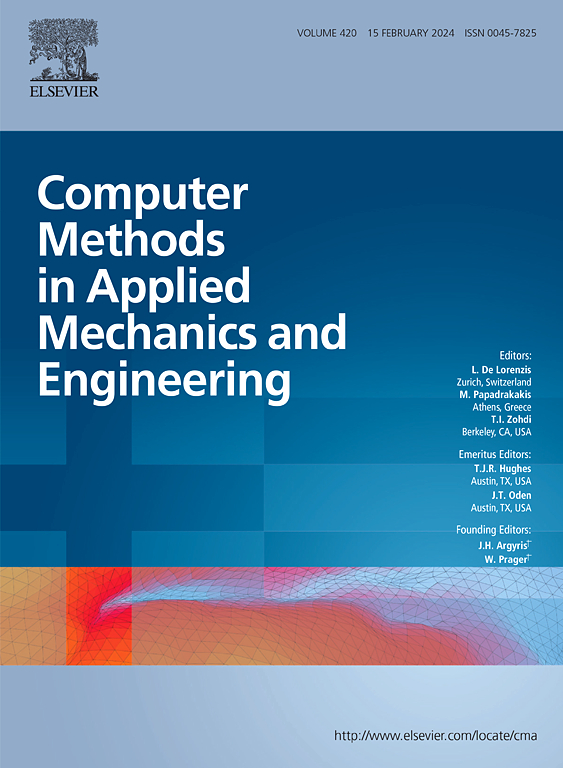Locking and stabilization free Hybrid Virtual Elements for the coarse mesh analysis of elastic thick plates
IF 6.9
1区 工程技术
Q1 ENGINEERING, MULTIDISCIPLINARY
Computer Methods in Applied Mechanics and Engineering
Pub Date : 2025-03-12
DOI:10.1016/j.cma.2025.117883
引用次数: 0
Abstract
This work presents a Virtual Element formulation (VE) for shear-deformable elastic plates. In particular, the Hybrid Virtual Element Method (HVEM) is adopted, which assumes a self-equilibrated stress interpolation and an energy-based projection, eliminating the need for stabilization terms. This choice, together with a cubic linked interpolation for displacement and rotations, makes the approach free from locking, even for very thin plates and highly distorted element geometries. These features enable the proposed VE to achieve high accuracy even for coarse meshes, yielding low errors when compared to analytical solutions and providing a smooth reconstruction of all the stress field components. Furthermore, low error in both the displacement and stress fields are obtained in the challenging case of single element polygonal discretization. The same performance are guaranteed in presence of bulk loads, thanks to a consistent treatment within the projection operation that a-priori assumes equilibrium for the stress field interpolation.
A random-based benchmark is proposed for assessing numerically the absence of spurious modes in concave and convex distorted elements. The proposed HVEM for plate is validated in classical benchmark problems, demonstrating the superior accuracy of polygonal meshes compared to the quadrilateral ones, for an equivalent number of degrees of freedom. This result is relevant in all the applications where polygonal element shapes are necessary. In addition, it opens up the way to new modeling scenarios where polygonal meshes are preferred not only for their versatility but also for their enhanced accuracy.
求助全文
约1分钟内获得全文
求助全文
来源期刊
CiteScore
12.70
自引率
15.30%
发文量
719
审稿时长
44 days
期刊介绍:
Computer Methods in Applied Mechanics and Engineering stands as a cornerstone in the realm of computational science and engineering. With a history spanning over five decades, the journal has been a key platform for disseminating papers on advanced mathematical modeling and numerical solutions. Interdisciplinary in nature, these contributions encompass mechanics, mathematics, computer science, and various scientific disciplines. The journal welcomes a broad range of computational methods addressing the simulation, analysis, and design of complex physical problems, making it a vital resource for researchers in the field.

 求助内容:
求助内容: 应助结果提醒方式:
应助结果提醒方式:


